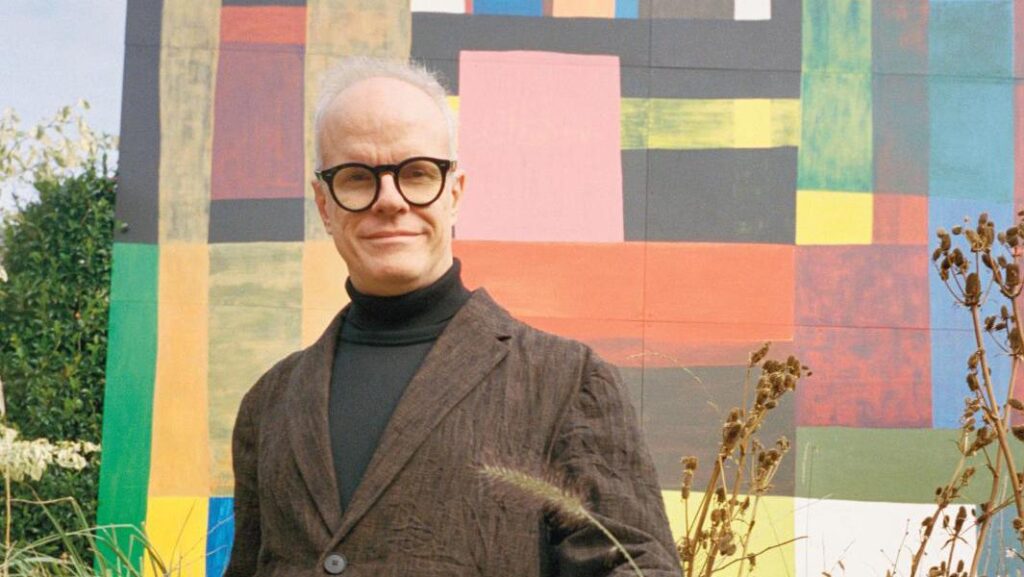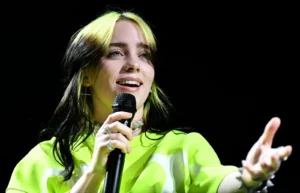Hans Ulrich Obrist
23 min read
Hans Ulrich Obrist is a visionary curator who has transformed the way exhibitions are conceived and experienced....
Hans Ulrich Obrist: Redefining Curatorial Practice
Hans Ulrich Obrist is one of the most influential figures in the world of contemporary art curation. Born in Zurich, Switzerland, in 1968, Obrist started his curatorial career at a young age, developing an approach that emphasized collaboration and cross-disciplinary exchange. His work is celebrated for breaking the traditional boundaries of curating, often bringing together artists, writers, architects, and scientists to explore the intersections between their respective fields.
Obrist’s early interest in art was nurtured through visits to art galleries and conversations with leading figures in the art world. His first major curatorial project, The Kitchen Show, held in his apartment kitchen in 1991, set the tone for his experimental approach. Instead of following the conventional route of working in established museums, Obrist began organizing exhibitions in non-traditional spaces, such as hotels, train stations, and even airplanes. This flexibility and innovation became his trademark.
In 2006, Obrist became the Co-director of Exhibitions and Programs and Director of International Projects at the Serpentine Galleries in London. His tenure at the Serpentine has been marked by an emphasis on broadening the scope of contemporary art. Obrist’s shows often blur the lines between disciplines, encouraging artists to engage with pressing global issues such as climate change, technology, and the future of cities. His Serpentine Marathon series, for example, is a program of discussions, performances, and presentations that bring together thinkers from diverse fields to discuss topics ranging from extinction to artificial intelligence.
Obrist is also known for his prolific writing and interviews. His project, The Interview Project, has seen him interview over 2,000 artists, architects, scientists, and intellectuals. These interviews provide unique insights into the creative process and the evolving role of the artist in society. Obrist’s interviews are often seen as an extension of his curatorial practice, a way of documenting the ideas and influences that shape contemporary art.
As a curator, Obrist is deeply committed to the idea of the museum as a living, evolving entity. He challenges the notion of the static exhibition, instead promoting the idea of the exhibition as an ongoing conversation that evolves over time. His work often involves revisiting past exhibitions and reinterpreting them in new contexts, ensuring that they remain relevant and responsive to the changing world.
Despite his unconventional approach, Obrist has received numerous accolades for his work. He has curated countless exhibitions at major institutions worldwide, including the Venice Biennale, the Art Basel fairs, and the Manifesta Biennial. Obrist’s influence extends beyond the art world; he is a cultural force, shaping the way we think about the relationship between art, society, and the future.
In summary, Hans Ulrich Obrist is a visionary curator who has redefined the boundaries of his profession. Through his innovative exhibitions, prolific writing, and commitment to cross-disciplinary exchange, Obrist has become a central figure in the global art world. His work continues to inspire new generations of curators, artists, and thinkers, ensuring his place as one of the most important curators of the 21st century.
Okwui Enwezor
Okwui Enwezor: Globalizing the Art World
Okwui Enwezor (1963–2019) was a pioneering figure in the art world, known for reshaping the global art scene and pushing for greater representation of non-Western voices. Born in Calabar, Nigeria, Enwezor brought an international and postcolonial perspective to art curation, challenging the Western dominance in the contemporary art discourse. His legacy as a curator is marked by a commitment to social justice, historical reflection, and the exploration of political themes within art.
Enwezor’s journey into the world of art was somewhat unconventional. He moved to New York in the early 1980s to study political science, and though he initially had little formal training in art, he developed a deep interest in contemporary artistic practices. This unique background allowed Enwezor to approach art from a broader socio-political perspective, rather than through the insular lens of the traditional art world.
Enwezor’s breakthrough came with his directorship of Documenta 11 in 2002, one of the most prestigious and influential contemporary art exhibitions in the world, held in Kassel, Germany. As the first non-European to direct Documenta, Enwezor’s curatorial vision for the exhibition was groundbreaking. He introduced a global perspective, featuring artists from Africa, Asia, Latin America, and other underrepresented regions, thereby shifting the conversation about contemporary art away from its Western-centric focus. Documenta 11 addressed issues such as migration, global capitalism, and post-colonial identity, challenging the art world to consider the broader political and social contexts in which art is created.
Enwezor’s curatorial approach was informed by his belief in the role of art as a tool for social and political engagement. He viewed exhibitions as platforms for dialogue and critique, rather than simply showcases for aesthetic experience. His exhibitions often addressed heavy political themes, including apartheid in South Africa, civil wars in Africa and the Middle East, and the rise of global inequality. Enwezor believed that art should confront the realities of the contemporary world and provide a space for critical reflection and activism.
One of Enwezor’s most significant achievements was curating the 2015 Venice Biennale, one of the art world’s most prestigious events. Titled All the World’s Futures, the Biennale was a sprawling, politically charged exhibition that addressed themes such as history, capitalism, and colonialism. Enwezor structured the Biennale as a kind of parliament, with artists from around the world contributing to an ongoing “live” exhibition. One of the highlights was a continuous reading of Karl Marx’s Das Kapital, a provocative choice that underscored the exhibition’s engagement with issues of labor, exploitation, and global capitalism.
Enwezor’s intellectual rigor was also evident in his writings and teaching. He was a prolific writer and editor, contributing to numerous books and art catalogs, and served as a visiting professor at prestigious institutions such as Columbia University and the University of Pittsburgh. His writings explored the intersections of art, history, and politics, often focusing on how art from the Global South can challenge Western narratives of modernity.
As the Director of Haus der Kunst in Munich from 2011 to 2018, Enwezor continued to push boundaries, organizing exhibitions that reflected his global vision. One of his most important exhibitions during this time was Postwar: Art Between the Pacific and the Atlantic, 1945–1965. This exhibition examined the global impact of World War II on art, featuring works from Europe, the United States, Latin America, Asia, and Africa, thus challenging the Eurocentric narrative of postwar art history.
Throughout his career, Enwezor was driven by a desire to democratize the art world, advocating for a more inclusive and diverse approach to art history and exhibition-making. His curatorial work aimed to decenter the Western art canon, bringing voices and perspectives from the margins into the mainstream. His exhibitions were not just about art; they were about understanding the complexities of the world and providing space for voices that had been historically silenced.
Enwezor’s death in 2019 was a tremendous loss to the art world, but his influence endures. He left behind a legacy of intellectual rigor, political engagement, and a commitment to global inclusivity in the arts. Okwui Enwezor’s vision has had a lasting impact, inspiring curators, artists, and thinkers to consider the role of art in addressing the critical issues of our time.
Thelma Golden
Thelma Golden: Championing Black Art and Culture
Thelma Golden, a leading figure in contemporary art, is renowned for her work in promoting and curating African American art. As the Director and Chief Curator of The Studio Museum in Harlem, she has made it her mission to uplift Black artists and redefine the narrative of Black art within the broader context of contemporary art. Born in St. Albans, Queens, in 1965, Golden has become one of the most influential curators in the world, shaping the discourse around race, identity, and culture through her exhibitions and leadership.
Golden’s career began at the Whitney Museum of American Art in New York, where she worked from 1987 to 1998. Her time at the Whitney proved formative; she was part of the curatorial team behind the controversial 1993 Whitney Biennial, a landmark exhibition that addressed themes of race, gender, sexuality, and multiculturalism. This exhibition was pivotal in expanding the boundaries of contemporary art by including the voices of marginalized communities. It also established Golden as a bold and visionary curator unafraid to tackle challenging topics head-on.
After leaving the Whitney, Golden joined The Studio Museum in Harlem in 2000, initially as a Deputy Director for Exhibitions and Programs before becoming its Director in 2005. The Studio Museum, founded in 1968, is dedicated to showcasing the work of artists of African descent and providing a platform for art that reflects the Black experience. Under Golden’s leadership, the museum has grown into a vital institution, not only for Black artists but for the entire art world. The museum’s reputation has soared, and it has become a crucial venue for launching the careers of many contemporary Black artists, including Chris Ofili, Wangechi Mutu, Mickalene Thomas, and Kehinde Wiley.
Golden’s curatorial approach is deeply rooted in the concept of Black art as a constantly evolving practice, one that is not confined to a singular style or narrative. She has worked tirelessly to challenge the monolithic view of Black artists, instead presenting them as diverse, multifaceted creators who engage with a wide array of themes, from personal identity to global politics. One of Golden’s most famous exhibitions, Freestyle (2001), introduced the term “post-Black art” to describe a new generation of Black artists who refused to be pigeonholed by race. The exhibition showcased artists whose work was informed by their identity but not defined by it, emphasizing that Black artists should not be limited to producing work about race.
In addition to her exhibitions, Golden has played a significant role in developing the museum’s artist-in-residence program, which has become a cornerstone of The Studio Museum’s mission. This program offers emerging artists the opportunity to live and work in Harlem, creating new art while engaging with the local community. Over the years, the residency has launched the careers of numerous artists, cementing The Studio Museum’s role as an incubator for Black creativity.
Golden’s curatorial work is characterized by a deep engagement with both art and the social issues that surround it. Her exhibitions often explore the intersection of race, history, and culture, reflecting her belief that art can serve as a powerful tool for social change. Through her exhibitions, Golden creates spaces where complex conversations about race, identity, and politics can unfold. One such exhibition was Black Male: Representations of Masculinity in Contemporary American Art (1994), which addressed the portrayal of Black men in art, media, and society. The exhibition was a groundbreaking exploration of race, gender, and representation, highlighting Golden’s commitment to addressing pressing social issues through art.
Golden’s influence extends far beyond her curatorial work. She is a sought-after speaker and writer, frequently contributing to the discourse on art, race, and culture. Her role as a public intellectual has made her a key figure in shaping the conversation around Black art and its place within the wider art world. She has received numerous awards and honors for her contributions to the arts, including the 2016 Audrey Irmas Award for Curatorial Excellence.
Under Golden’s leadership, The Studio Museum has also been working on a new building project, designed by renowned architect David Adjaye, which will provide the institution with a larger space to continue its mission of supporting and showcasing artists of African descent. The expansion represents not only the physical growth of the museum but also its growing influence and importance in the global art world.
In conclusion, Thelma Golden is a visionary curator who has transformed the landscape of contemporary art by championing the work of Black artists and promoting a more inclusive narrative within the art world. Through her exhibitions, leadership at The Studio Museum, and commitment to social change, Golden has become one of the most influential figures in the art world, ensuring that Black art and culture are celebrated and understood in all their complexity.
Nancy Spector
Nancy Spector: Curating Iconic Contemporary Art with Intellectual Depth
Nancy Spector is an internationally renowned curator known for her innovative approach to contemporary art and her long-standing career at the Solomon R. Guggenheim Museum in New York. Throughout her career, Spector has been celebrated for organizing exhibitions that challenge traditional narratives in art, as well as her intellectual rigor in curating complex thematic shows. Her work has established her as one of the most influential voices in contemporary art curation.
Spector was born in New York City in 1959 and studied art history at prestigious institutions, including Sarah Lawrence College, Williams College, and New York University’s Institute of Fine Arts. She joined the Guggenheim Museum in 1989 as a curator and quickly rose through the ranks due to her unique ability to synthesize contemporary artistic practice with philosophical and cultural theory. By 2006, she was appointed Chief Curator and later became the Artistic Director in 2016, shaping the Guggenheim’s vision for many years.
One of Spector’s most notable achievements is her long-running relationship with the work of Maurizio Cattelan, a provocative and often controversial Italian artist. Spector curated Cattelan’s 2011 retrospective, All, at the Guggenheim, which became one of her most iconic exhibitions. The show saw Cattelan’s entire body of work suspended from the ceiling of the museum’s rotunda in a dramatic and thought-provoking installation. This bold presentation became a hallmark of Spector’s curatorial style: not only did she take risks in how art was presented, but she also explored deeper existential questions through her exhibitions.
Spector’s exhibitions often investigate the intersection of art, culture, and politics. She curated groundbreaking shows such as Felix Gonzalez-Torres: America (2007), which examined themes of love, loss, identity, and power through the minimalist works of the Cuban-born artist. Gonzalez-Torres’ subtle but emotionally charged installations, which included stacks of paper and strings of light bulbs, were displayed in a way that allowed visitors to engage directly with the artwork, blurring the line between the artist’s message and the audience’s interpretation. Spector’s sensitive curation revealed her ability to translate complex emotional and political content through art, making her exhibitions not only visually striking but also intellectually and emotionally engaging.
Beyond individual artist retrospectives, Spector is also known for her thematic exhibitions that challenge conventional thinking. In 2005, she organized Theanyspacewhatever, a group show that brought together ten artists who were known for creating immersive environments that altered the museum experience itself. This exhibition blurred the boundaries between artwork and exhibition design, with artists such as Pierre Huyghe and Dominique Gonzalez-Foerster transforming the Guggenheim into a space where time, memory, and perception were constantly in flux. The exhibition reflected Spector’s interest in how contemporary art can reshape our understanding of physical space and time.
Spector’s influence extends far beyond the Guggenheim. She co-curated the American Pavilion at the Venice Biennale in 2007, presenting the works of Felix Gonzalez-Torres, further solidifying her status as a leading figure in international curatorial practice. She was also instrumental in organizing Art and China after 1989: Theater of the World (2017), one of the most significant exhibitions of contemporary Chinese art ever staged in the U.S. This exhibition showcased works by more than 70 artists and collectives, exploring the rapid social, political, and economic transformations in China after the Tiananmen Square massacre. The show sparked important dialogues about censorship, state power, and global art, demonstrating Spector’s ongoing commitment to using art as a platform for discussing urgent global issues.
Her leadership at the Guggenheim also included fostering relationships with contemporary artists to produce new commissions and supporting emerging voices in the art world. Spector’s vision helped make the museum not just a repository of art but a dynamic space for experimental and interdisciplinary collaboration. Her curatorial work often involves collaboration with living artists, allowing her to push the boundaries of how exhibitions are conceived and experienced.
In addition to her curatorial work, Spector is an accomplished writer and editor. She has written extensively on contemporary artists, including major monographs on Matthew Barney, whose controversial and theatrical Cremaster Cycle was curated by Spector in a seminal exhibition at the Guggenheim in 2002. Her writing is characterized by its depth, intellectual insight, and ability to make complex art concepts accessible to a broad audience.
In 2020, Nancy Spector stepped down from her role at the Guggenheim following an investigation into the museum’s handling of racism claims, a situation that highlighted the challenges of addressing systemic inequalities even in progressive cultural institutions. Despite this, Spector’s legacy as a curator remains intact, with her exhibitions and curatorial philosophy continuing to influence the field.
In conclusion, Nancy Spector is one of the most influential contemporary art curators of her generation. Her intellectual approach to curating, combined with her ability to present art in bold and unexpected ways, has left an indelible mark on the art world. Through her exhibitions, Spector has continually challenged audiences to think critically about art and its role in society, making her a vital figure in shaping contemporary artistic discourse.
Massimiliano Gioni
Massimiliano Gioni: Blurring Boundaries Between Art and Life
Massimiliano Gioni is an Italian curator widely recognized for his visionary approach to contemporary art. As the Artistic Director at the New Museum in New York and the Director of the Venice Biennale in 2013, Gioni has consistently challenged conventional boundaries of art, offering audiences unconventional perspectives and rethinking the relationship between art, society, and culture. His exhibitions are known for weaving together high art and vernacular creativity, and exploring the ways in which art intersects with the everyday human experience.
Born in 1973 in Busto Arsizio, Italy, Gioni’s career began at an early age. His trajectory into the art world started with writing and editing for art publications. He co-founded the Charley magazine, which focused on contemporary art, and became a prominent figure in art criticism. Gioni’s early experiences shaped his interest in exploring the limits of traditional curation and the potential for exhibitions to convey complex narratives beyond formal boundaries.
One of Gioni’s most acclaimed exhibitions, and a defining moment in his career, was his role as Artistic Director for the 55th Venice Biennale in 2013, which he titled The Encyclopedic Palace. This exhibition reflected Gioni’s ongoing fascination with knowledge, imagination, and the human desire to classify and interpret the world. Inspired by the work of self-taught artist Marino Auriti, who dreamed of building a museum to house all human knowledge, The Encyclopedic Palace explored the intersection between art, science, and spirituality. The exhibition featured over 150 artists from diverse backgrounds, showcasing an eclectic mix of outsider art, self-taught artists, contemporary masters, and forgotten historical figures.
What made The Encyclopedic Palace so innovative was its ability to present art within a broader framework of human creativity. Gioni eschewed the traditional hierarchy between professional artists and self-taught creators, blurring the boundaries between fine art and folk art, between personal expression and collective understanding. The exhibition was seen as a critical response to the internet age, where the boundaries of knowledge are fragmented, endless, and deeply subjective.
At the heart of Gioni’s curatorial philosophy is an emphasis on inclusivity and the importance of multiple narratives. His exhibitions often explore the interplay between the personal and the universal, and between the rational and the irrational. In his landmark 2003 show La Grande Madre at the Palazzo Reale in Milan, Gioni examined the image of motherhood in art and culture, spanning over a century of artistic production. By bringing together works from feminist artists like Louise Bourgeois, Cindy Sherman, and Carol Rama alongside surrealist and psychoanalytic interpretations of the mother figure, the exhibition highlighted Gioni’s ability to create thematic shows that delve into psychology, gender, and identity with a historical and cultural perspective.
At the New Museum, where Gioni has served as Artistic Director since 2007, his impact has been profound. Under his leadership, the museum has gained a reputation for showcasing experimental and thought-provoking art, often presenting the work of underrepresented artists from around the world. Gioni’s curatorial choices at the New Museum reflect his belief that art institutions should not just be repositories of culture but active spaces of inquiry and debate. One of his most notable exhibitions there was The Generational: Younger Than Jesus (2009), a survey of artists under the age of 33 that showcased emerging global talent and highlighted new voices shaping the future of contemporary art. This show emphasized Gioni’s commitment to fostering emerging artists and expanding the canon of art history to include voices that are often overlooked.
Another standout exhibition at the New Museum was Ghosts in the Machine (2012), which explored the relationship between humans, technology, and machines. The exhibition examined how technological advances shape human experience and artistic production, a recurring theme in Gioni’s work. Featuring works from artists like Stan VanDerBeek, Hans Haacke, and Tania Bruguera, it showcased Gioni’s interdisciplinary approach and interest in the intersections of art, technology, and the human psyche.
Gioni’s curatorial practice also extends to non-traditional art spaces. He has been involved in creating large-scale biennials and international exhibitions, including co-curating the Manifesta 5 in San Sebastián in 2004 and The Gwangju Biennale in 2010. These shows have allowed him to explore the role of art in various global contexts and present artworks that challenge geopolitical boundaries.
Gioni’s curatorial philosophy is rooted in his belief that art should provoke thought and challenge perceptions of the world. He often draws upon the surreal and the fantastic to question the limits of human knowledge, making his exhibitions feel like journeys through the unknown. His eclectic taste and willingness to include works by self-taught artists, outsider artists, and marginalized voices have expanded the boundaries of contemporary art, bringing more diversity and complexity to global exhibitions.
In conclusion, Massimiliano Gioni is a curator who has made significant contributions to contemporary art by breaking down traditional hierarchies and exploring the intersections of art, knowledge, and the human experience. His exhibitions challenge audiences to reconsider what constitutes art and how we make sense of the world through it. Gioni’s bold curatorial vision continues to influence the field of contemporary art and will likely do so for many years to come.
Jessica Morgan
Jessica Morgan: Redefining Contemporary Art Through Global and Multidisciplinary Perspectives
Jessica Morgan is a prominent figure in the contemporary art world, known for her innovative approach to curating exhibitions that span a wide range of mediums, genres, and cultural contexts. Currently serving as the Director of the Dia Art Foundation, Morgan has been instrumental in pushing the boundaries of how contemporary art is presented, often focusing on site-specific works and long-term projects that engage deeply with both the physical space and the audience.
Born in 1968 in England, Morgan’s background in art history, coupled with her global sensibilities, has shaped her career as one of the most forward-thinking curators of her generation. She studied at the University of Cambridge and the Courtauld Institute of Art, where she developed a deep understanding of both historical and contemporary art, which informs her curatorial practice today.
Morgan’s curatorial philosophy centers around the idea of art as a dynamic, evolving entity that interacts with its environment and context. She is best known for curating large-scale exhibitions that often challenge traditional formats of display, presenting art as something that is not confined to the gallery but that exists in dialogue with the surrounding space and social issues. Her work has consistently sought to bring a global perspective to contemporary art, featuring artists from diverse cultural backgrounds and addressing issues that resonate on an international level.
Before taking on her role at the Dia Art Foundation, Morgan held several prestigious curatorial positions, including at Tate Modern in London. As the Daskalopoulos Curator, International Art at Tate Modern, Morgan oversaw major exhibitions and acquisitions that expanded the museum’s reach and influence in the global art scene. One of her most influential exhibitions at Tate was The World Goes Pop (2015), a groundbreaking exploration of global pop art beyond its traditional American and European roots. The show revealed how pop art was adopted and adapted in various countries, from Latin America to Eastern Europe and Asia, to address local political and social issues. By broadening the scope of pop art to include global voices, Morgan challenged the conventional Western-centric narrative of art history and highlighted the role of art in political resistance and cultural critique.
Morgan’s tenure at the Dia Art Foundation has been marked by her commitment to preserving the foundation’s focus on large-scale, site-specific works while also expanding its contemporary relevance. Dia, known for its monumental installations and long-term projects by artists like Walter De Maria, Dan Flavin, and Donald Judd, emphasizes minimalism, conceptualism, and earthworks. Morgan’s leadership has maintained Dia’s historical focus while incorporating more contemporary and diverse voices into the program. She has championed the work of women and artists of color, ensuring that Dia’s exhibitions reflect the diversity of contemporary art practices.
One of the most significant projects under Morgan’s direction at Dia has been the restoration and reinstallation of Robert Smithson’s Spiral Jetty (1970) in the Great Salt Lake, Utah, one of the most famous examples of Land Art. Morgan’s efforts to preserve and engage with Land Art reflect her belief in the importance of maintaining a dialogue between art and the environment, a recurring theme in her curatorial work. At Dia, she has expanded this focus by commissioning new works that continue to push the boundaries of site-specific art, ensuring that Dia remains a leading institution for innovative contemporary art.
In addition to her work at Dia and Tate, Morgan has curated several international exhibitions, including the 10th Gwangju Biennale in South Korea in 2014. Titled Burning Down the House, this biennale addressed themes of destruction and regeneration, exploring how art can respond to moments of social, political, and cultural upheaval. The exhibition featured artists from around the world and included a wide range of media, from painting and sculpture to performance and installation. Morgan’s curation of the Gwangju Biennale exemplified her ability to create cohesive, thought-provoking exhibitions that engage with global issues while offering diverse artistic perspectives.
Morgan’s curatorial practice is deeply informed by her belief in art’s ability to respond to and reflect social change. She has consistently sought to elevate artists whose work engages with pressing social and political issues, from globalization and migration to climate change and feminism. At the same time, her exhibitions are characterized by their intellectual rigor and commitment to exploring the conceptual underpinnings of contemporary art.
Another significant aspect of Morgan’s curatorial style is her emphasis on interdisciplinary approaches. She often collaborates with artists working in film, architecture, and design, and she is known for creating exhibitions that transcend traditional artistic categories. This openness to different forms of creative expression has allowed Morgan to curate exhibitions that feel fresh, dynamic, and relevant to contemporary audiences.
In conclusion, Jessica Morgan is a curator who has left an indelible mark on the contemporary art world through her global perspective, commitment to site-specific and long-term projects, and dedication to addressing critical social issues through art. Her leadership at institutions like Tate Modern and the Dia Art Foundation has pushed the boundaries of what art can be, ensuring that contemporary art remains a vital, evolving practice. By championing diverse voices and multidisciplinary approaches, Morgan has redefined how art interacts with space, history, and society.
Hans Ulrich Obrist
Hans Ulrich Obrist: The Art of Conversation and Curatorial Innovation
Hans Ulrich Obrist is one of the most prominent curators in the contemporary art world, widely recognized for his innovative approaches to exhibition-making and his pioneering role in redefining the role of a curator. Known for his tireless energy and boundless curiosity, Obrist has built a reputation as a curator who not only organizes exhibitions but also fosters dialogues, brings together diverse voices, and explores the intersection of art with other disciplines such as science, literature, and philosophy.
Born in Zurich, Switzerland, in 1968, Obrist developed an early passion for art, architecture, and intellectual inquiry. His unique style of curating emerged out of his dissatisfaction with traditional museum exhibitions, which he found static and overly focused on finished works. Instead, Obrist sought to create dynamic, experimental spaces where ideas could be exchanged, art could be experienced in new ways, and the boundaries of what an exhibition could be were constantly pushed.
Obrist’s first major curatorial experiment was in 1991, when he organized an exhibition in his kitchen, featuring works by artists like Christian Boltanski and Peter Fischli & David Weiss. This unconventional setting signaled Obrist’s belief that art does not need to be confined to institutional spaces and can thrive in any environment where it sparks conversation and thought. This kitchen exhibition set the tone for Obrist’s later work, where the emphasis was often on experimentation, collaboration, and dialogue.
As co-director of exhibitions and programs and director of international projects at the Serpentine Galleries in London since 2006, Obrist has spearheaded numerous groundbreaking exhibitions that have redefined the possibilities of contemporary art. One of his most celebrated contributions is the Serpentine Pavilion series, which invites a different architect each year to design a temporary pavilion in the Serpentine Galleries’ gardens. This project bridges the worlds of art and architecture, bringing visionary architectural designs to the public and fostering conversations about the role of space and design in everyday life. Architects such as Zaha Hadid, Rem Koolhaas, and Francis Kéré have been among the participants, making the Serpentine Pavilion series a global platform for architectural innovation.
Obrist’s approach to curating is characterized by his belief that exhibitions should be living, evolving entities. He often speaks of his work in terms of “unfinished” or “in-progress” projects, where the exhibition becomes a space for experimentation and the artworks themselves are not necessarily presented in a final form. His curatorial projects are often multi-layered and interdisciplinary, bringing together artists, writers, scientists, and thinkers from various fields to engage in meaningful dialogue. This interdisciplinary approach reflects Obrist’s view that art is not an isolated practice but one that interacts with all facets of human knowledge and experience.
A key aspect of Obrist’s practice is his emphasis on conversations with artists. He is famous for conducting hundreds of interviews with artists, philosophers, and cultural figures, which he compiles in his ongoing Interview Project. These conversations often become an extension of the artwork itself, as Obrist sees the dialogue between artist and curator as a central component of the creative process. Through his interviews, Obrist has captured the voices of some of the most important figures in contemporary culture, including Ai Weiwei, Gerhard Richter, Yoko Ono, and Marina Abramović.
Obrist’s exhibitions often reflect his desire to challenge traditional curatorial hierarchies and structures. For example, in his 2011 project Do It, he invited artists to contribute instructions for artworks, which could then be realized by anyone, anywhere. This participatory exhibition blurred the lines between artist, curator, and audience, allowing art to exist in a more democratic and fluid form. The project, which continues to be realized in different contexts around the world, exemplifies Obrist’s belief in the open-ended and collaborative nature of art-making.
Obrist has also been deeply involved in large-scale international exhibitions. He was a co-curator of Manifesta 1 in 1996, the first edition of the roving European Biennial of Contemporary Art, and has curated at major global venues, including the Venice Biennale and Documenta. His global outlook and relentless pursuit of new artistic voices have helped to shape the direction of contemporary art on an international scale.
One of Obrist’s most influential exhibitions was The 11th Lyon Biennale in 2011, titled A Terrible Beauty Is Born. Inspired by W.B. Yeats’ poem, the exhibition explored the relationship between beauty and political or social upheaval, bringing together a diverse range of artists whose work grappled with issues of transformation, conflict, and renewal. This thematic approach, coupled with Obrist’s signature openness to unconventional exhibition formats, exemplified his ability to create thought-provoking, conceptually rich exhibitions that resonate with contemporary social and political concerns.
Despite his high profile, Obrist remains committed to promoting underrepresented and emerging artists. He has long championed non-Western artists and marginalized voices, making a concerted effort to diversify the art world’s traditionally Eurocentric and male-dominated narratives. Obrist’s curatorial projects often feature artists from Africa, Asia, and Latin America, as well as women and LGBTQ+ creators, contributing to a more inclusive and representative global art scene.
In addition to his curatorial work, Obrist is a prolific writer, having published numerous books and essays on art, curating, and cultural theory. His writings, much like his exhibitions, are marked by their interdisciplinary breadth and intellectual rigor. Obrist’s books, such as Ways of Curating (2014) and The Age of Earthquakes (2015, co-authored with Shumon Basar and Douglas Coupland), offer insights into his unique approach to the curatorial process and his vision of art as an ever-evolving dialogue with the world.
In conclusion, Hans Ulrich Obrist is a visionary curator who has transformed the way exhibitions are conceived and experienced. His interdisciplinary, collaborative, and conversational approach has expanded the role of the curator, making him one of the most influential figures in contemporary art today. Through his dynamic exhibitions, interviews, and writings, Obrist has not only shaped the art world but also broadened the scope of how art interacts with other disciplines and with the wider world.






